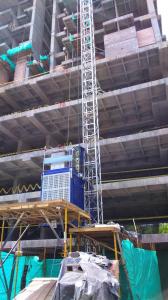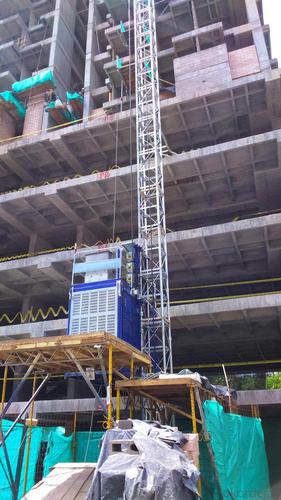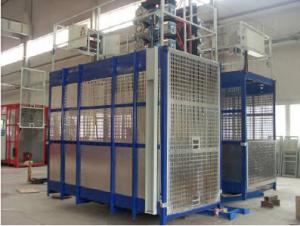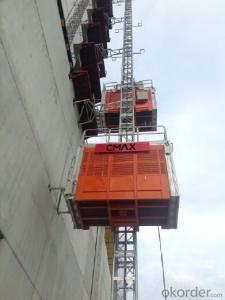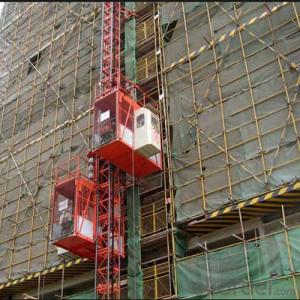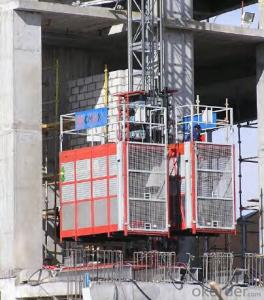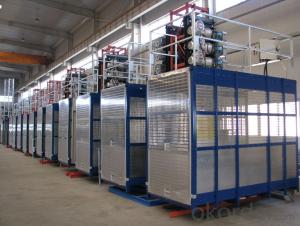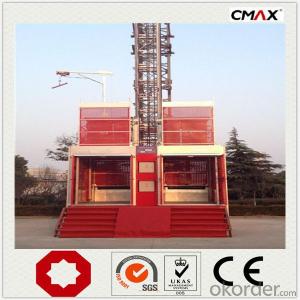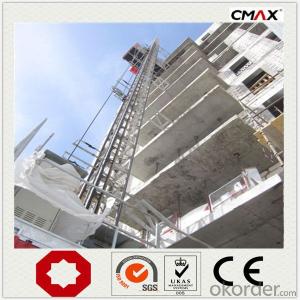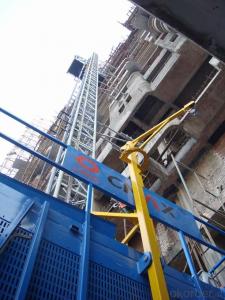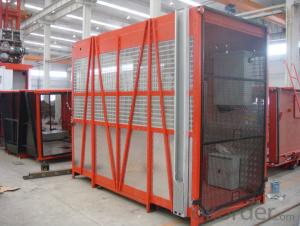Double Cage Building Hoist Lifting Machine In China
- Loading Port:
- China main port
- Payment Terms:
- TT OR LC
- Min Order Qty:
- 1 set
- Supply Capability:
- 1000 set/month
OKorder Service Pledge
OKorder Financial Service
You Might Also Like
Specification
Introduction :
Construction lifter is mainly used to transport people or goods to multistoried building.Buwidely applies to such contruction sites as industrial and civil architecture,bridge,underground,large chimney,and ship industry,etc.
Construction lifter has such advantages as steady property, safety, reliability, flexible carrying, and good adaptability, etc., improves working efficiency, and can reduce working intensity.
Parameter :
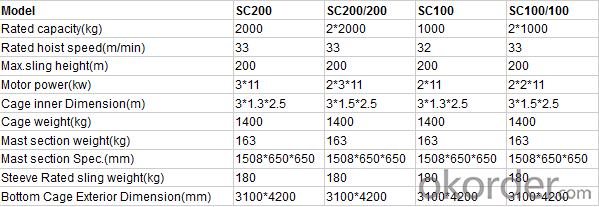
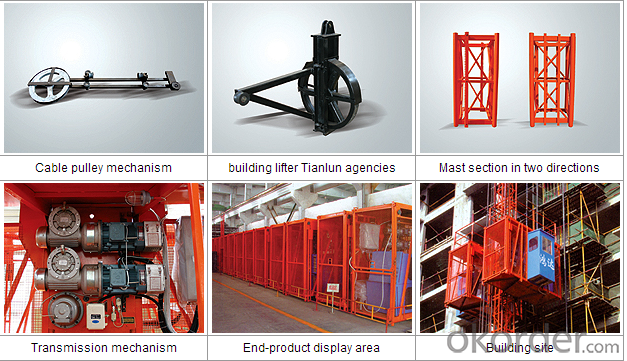
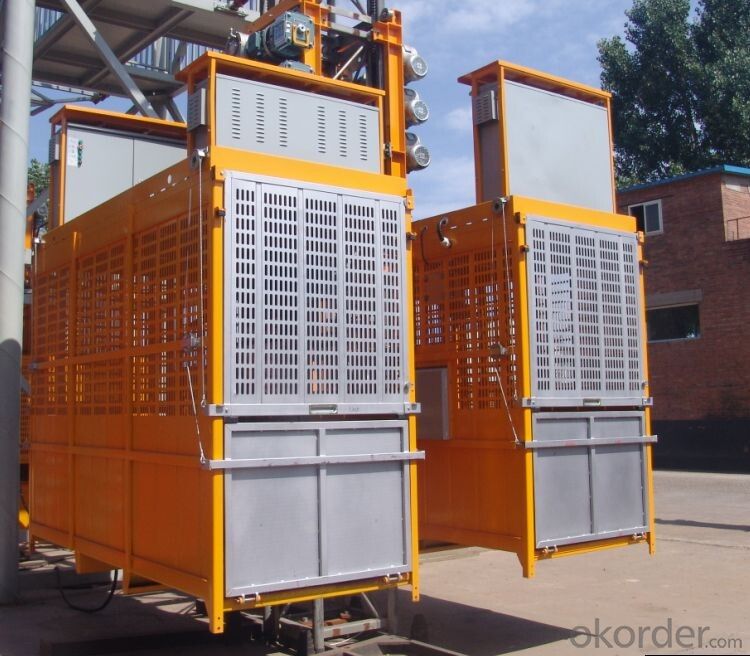
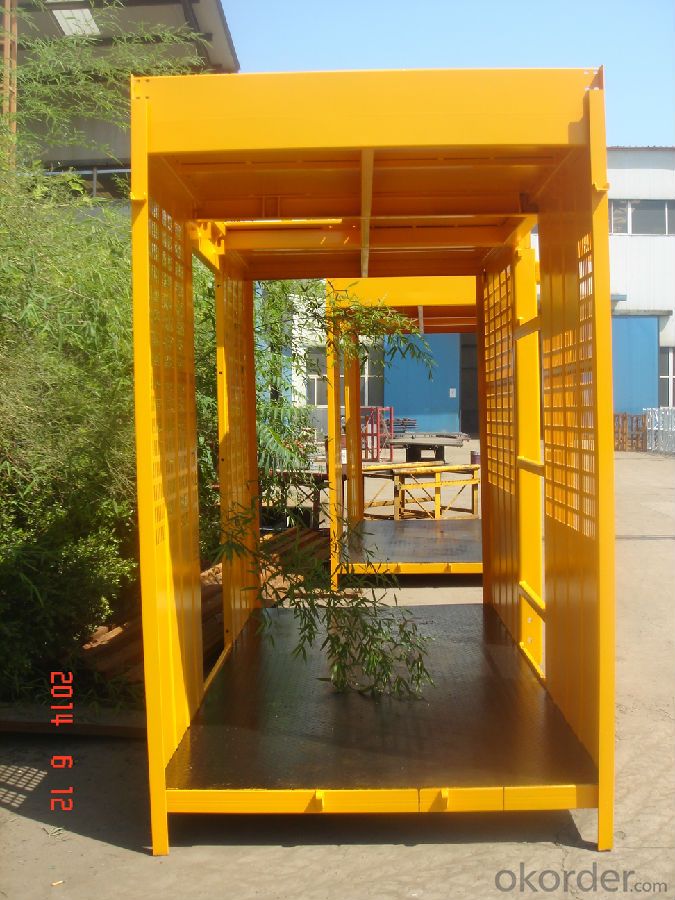
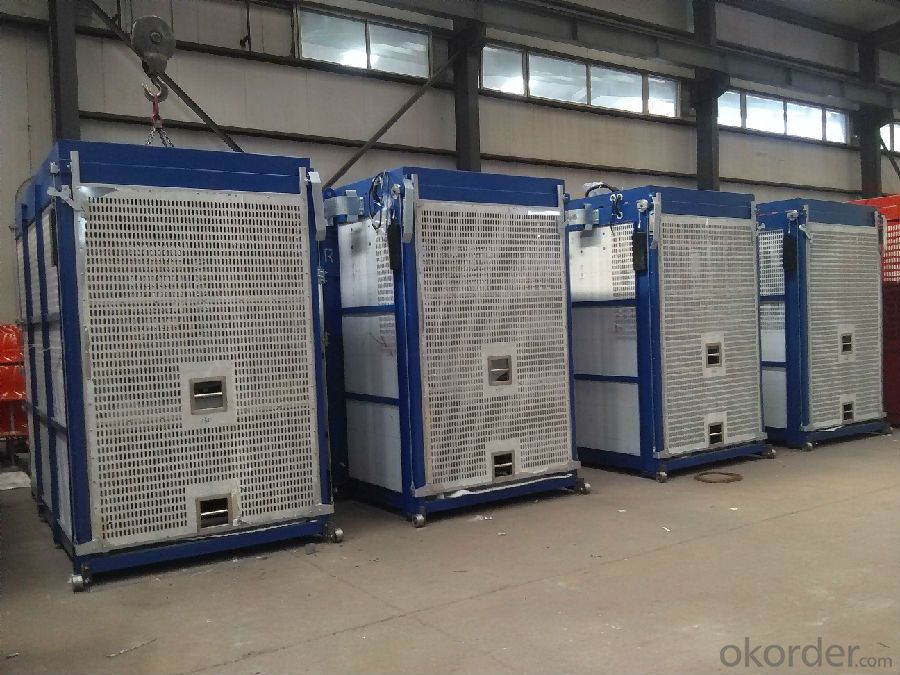
FAQ of Building Hoist
Q: What is the building hoist main purpose?
A: Building hoist equipped with double or single cabin to transport the materials and labors up and down. It's the ideal construction equipment for vertical transportation in the field of construction.
Q: What is the main structure of building hoist?
A: The P/M construction hoist mainly contains metal structure, driving system, electrical control system, cable guide & protection system, electrical top crane and safety device.
Q: What is the meaning of the building hoist’s code?
A: Take SC200/200 for example: “SC” stands for rack and pinion hoist, “200/200” stands for double cage and capacity is 2 tons per cage. “SC200” stands for single cage and capacity is 2 tons.
Q: What is the dimension of the cage?
A: Normally the cage dimension is 3X1.5X2.5M (L/W/H) for 2t type hoist. Details should be checked according to our quotation sheet. Also, the size can be customized according to the factual site condition. There are two doors (entrance & exit doors) for each cage, It can be produced as up & down sliding or ramping model for safety and convenience.
Brief Introduction about CNBM
1, CNBM is the biggest state-owned company which has had been awarded Qualified construction machinery manufactures and most of the big project are using our products.
2, CNBM possess key technical research department and could design & produce special machinery for international clients.
3, We have had passed ISO9001:2008,CE and etc.
4. The successful long-time construction machinery operation in the world testifies that the CMAX products’ performance is stable.
5. More than 10 overseas branch office provide immediate commercial convenience and after service.
6. We also has building hoist, suspended platform, formwork, etc. We also signed the strategic partnership with Tadano (China), XCMG, Zoomlion, Sany and other prestigious crane manufacturer, getting the competitive cost price from them, and using our overseas marketing channel to promote their brands. We can provider a series of equipment for your building company customer and supply a basket scheme for the final users.
7. We have built a cover 50,000 square meter logistic park in, Dubai UAE, will be a great guarantee of our business in middle east and nearby area.
- Q: What fundamental specifications or conditions must be met to operate a building hoist with a hydraulic pump?
- <p>To use a hydraulic pump to power a building hoist, several basic requirements must be met: a reliable power source, a suitable hydraulic pump with the correct pressure and flow rate, a robust and leak-free hydraulic system, safety mechanisms such as pressure relief valves and emergency stop features, proper installation and maintenance procedures, and adherence to safety standards and regulations. Additionally, the pump should be compatible with the hoist's design and capable of providing the necessary force and speed for lifting operations. Regular inspections and maintenance are crucial to ensure the hoist operates safely and efficiently.</p>
- Q: What are the safety measures to be taken to avoid accidents involving lifting equipment on construction sites?
- <p>To prevent accidents related to lifting equipment in construction work, several key safety measures should be implemented. These include regular inspections and maintenance of lifting equipment to ensure it is in good working order. Operators must be trained and certified for the specific equipment they are using. Safe lifting practices should be followed, such as using proper lifting techniques, not overloading equipment, and ensuring the load is balanced. A thorough risk assessment should be conducted before each lift, and a competent person should supervise the operation. Additionally, clear communication protocols should be established, and all workers should be trained in recognizing and avoiding hazards associated with lifting equipment.</p>
- Q: Is it permissible to use a building hoist for lifting people?
- <p>Building hoists are not designed for lifting people and doing so can be extremely dangerous. They are specifically engineered for the transportation of materials and equipment in construction settings. Using a building hoist to lift people violates safety regulations and can result in severe accidents. Always adhere to the manufacturer's guidelines and local safety laws, which prohibit the use of building hoists for carrying personnel.</p>
- Q: Can a building hoist be utilized for the transportation of objects within and between buildings?
- <p>Yes, building hoists are specifically designed to move objects vertically within buildings. They are commonly used in construction to lift materials and equipment to different floors. Additionally, they can be employed to transport objects into and out of buildings, especially when access is limited or when heavy loads need to be moved over short vertical distances. However, it's important to adhere to safety guidelines and regulations when operating a building hoist to ensure the secure and efficient movement of objects.</p>
- Q: This question asks for the method to determine the maximum weight an object can safely be lifted by a lifting device.
- <p>To calculate the weight of an object that can be safely lifted by a lifting device, you must consider several factors. First, determine the lifting capacity of the device, which is the maximum weight it is designed to handle. This information is typically provided by the manufacturer. Next, account for the weight of any additional equipment, such as slings or cables, that will be used in the lift. Subtract this from the lifting capacity to find the maximum weight the object can be. Ensure all safety margins and regulations are observed, as these can affect the safe weight limit. Always err on the side of caution to prevent overloading the lifting device.</p>
- Q: This question asks about the routine maintenance procedures for a building hoist, which is a piece of equipment used in construction to lift materials and personnel.
- <p>To maintain a building hoist, follow these steps: Regularly inspect the hoist for any signs of wear or damage, especially the cables, pulleys, and safety mechanisms. Lubricate moving parts as per the manufacturer's guidelines to reduce friction and prevent rust. Ensure all safety features, such as emergency stops and limit switches, are functioning correctly. Keep the hoist clean and free from debris, which can interfere with its operation. Check the electrical connections for any signs of corrosion or damage. Perform load tests to confirm the hoist's lifting capacity and ensure it meets safety standards. Always follow the manufacturer's maintenance schedule and guidelines, and have a professional service the hoist periodically.</p>
- Q: This question asks whether it is safe to operate a building hoist in adverse weather conditions such as wind and rain.
- <p>The use of a building hoist in windy or rainy weather is generally not recommended due to safety concerns. Wind can cause instability and swaying of the hoist, while rain can lead to slippery conditions and electrical hazards. Most hoist manufacturers and safety guidelines advise against operating hoists in such conditions. However, if absolutely necessary, it should be done with extreme caution, following specific safety protocols, and ensuring all necessary weatherproofing and stability measures are in place. Always consult the manufacturer's guidelines and local regulations before operating a hoist in adverse weather.</p>
- Q: This question asks for the method to change the angle at which a building hoist operates.
- <p>Adjusting the angle of a building hoist involves several steps. First, ensure the hoist is turned off and disconnected from power sources. Next, locate the hoist's tilt adjustment mechanism, which is typically found at the base or on the mast. This mechanism often consists of a set of bolts or pins that can be loosened to allow the angle to be changed. Adjust the angle by moving the mast or base to the desired position, ensuring it is level and stable. Once the correct angle is achieved, tighten the bolts or pins to secure the hoist in place. Always follow the manufacturer's guidelines and safety precautions when making adjustments to prevent accidents.</p>
- Q: This question asks if it is permissible to use a building hoist for the purpose of lifting people.
- <p>No, a building hoist should not be used for lifting people. Building hoists are designed for the transportation of materials and equipment during construction, not for carrying personnel. Using a building hoist to lift people is dangerous and against safety regulations. It poses significant risks, including falls and equipment malfunctions, which can lead to serious injuries or fatalities. Always use designated personnel lifts or other safe methods for moving people in construction settings.</p>
- Q: What are the fundamental parts that make up a building hoist?
- <p>The basic components of a building hoist include the hoist machine, mast or tower, guide rails, lifting cage, counterweight system, safety devices, electrical control system, and communication system. The hoist machine powers the lifting and lowering of the cage, while the mast provides structural support. Guide rails ensure the cage moves vertically, and the counterweight balances the cage's weight. Safety devices protect against accidents, and the electrical control system manages operations. The communication system allows for coordination between the hoist operator and other construction personnel.</p>
Send your message to us
Double Cage Building Hoist Lifting Machine In China
- Loading Port:
- China main port
- Payment Terms:
- TT OR LC
- Min Order Qty:
- 1 set
- Supply Capability:
- 1000 set/month
OKorder Service Pledge
OKorder Financial Service
Similar products
Hot products
Hot Searches
Related keywords
